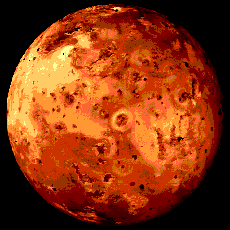This is an image of Io.
Click on image for full size
NASA
The Io Magnetic Field
The chances are that there is a magnetic field for Io. Io is
composed of lots of iron, Io is warm inside, and Io spins rapidly. These are all the ingredients for a magnetic field. The Galileo spacecraft will take detailed measurements to make a determination of whether there is an Ionian magnetic field or not.
Io's main contribution to Jupiter's magnetosphere is known as the "Io Torus", a donut-shaped cloud of particles which came from the atmosphere and found their way into the the magnetosphere. The cloud forms along the path of Io's orbit. This object has a major influence on Jupiter's magnetosphere.
You might also be interested in:

Amalthea was discovered by E Barnard in 1872. Of the 17 moons it is the 3rd closest to Jupiter, with a standoff distance of 181,300 km. Amalthea is about the size of a county or small state, and is just
...more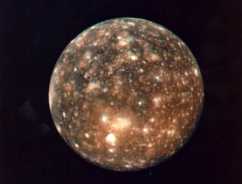
Callisto was first discovered by Galileo in 1610, making it one of the Galilean Satellites. Of the 60 moons it is the 8th closest to Jupiter, with a standoff distance of 1,070,000 km. It is the 2nd largest
...more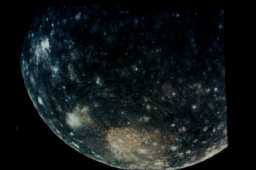
Most of the moons and planets formed by accretion of rocky material and volatiles out of the primitive solar nebula and soon thereafter they differentiated. Measurements by the Galileo spacecraft have
...more
Many examples of the differing types of terrain are shown in this image. In the foreground is a huge impact crater, which extends for almost an entire hemisphere on the surface. This crater may be compared
...more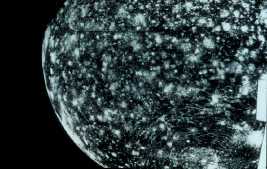
The surface of Callisto is deeply pockmarked with craters. It looks to be perhaps the most severely cratered body in the solar system. There are also very large craters to be found there. The severity
...more
Europa was first discovered by Galileo Galilei in 1610, making it one of the Galilean Satellites. Europa is Jupiter's 4th largest moon, 670,900 km from Jupiter. With a diameter that is about half the distance
...more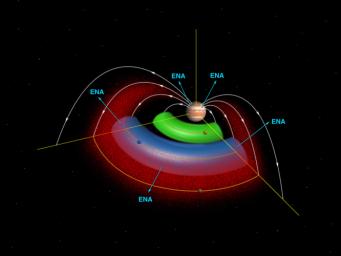
The Galileo mission discovered an amazing thing. Europa has its own atmosphere, although it is very, very thin. This atmosphere is created when fast moving molecules in Jupiter's magnetosphere hit the
...more


